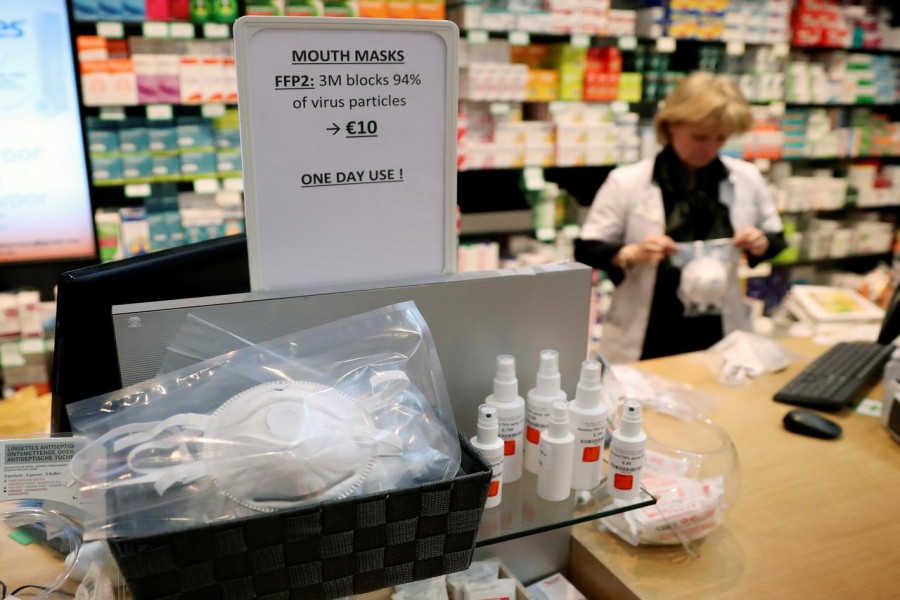Facilitating strategic medical equipment production

Mazbahul G Ahamad and AKM Nazrul Islam
Published :
Updated :

As the novel coronavirus (COVID-19) pandemic progresses, growing demands are causing shortages of testing kits, personal protective equipment (PPE), and ventilators in many affected countries. Even the most developed countries like the USA and UK are facing shortages in many such emergency medical equipment. This shortage is in part due to the export restrictions from source countries, coupled with the scarcity of essential materials to produce kits, PPE, and ventilators locally, and low-level production capacity of these essential items in the short term. Most countries might have never thought of facing such a global-level pandemic in the 21st century, in the age of advanced technology. Bangladesh is no exception. Multiple cities, including Dhaka and Narayanganj, are now experiencing considerable COVID-19 related mortality, with the number of cases, hospitalizations, and deaths increasing daily.
Unfortunately, Bangladesh, like most other high import-dependent countries, lacks supplies of essential medical supplies required for COVID-19 management. In most cases, national production of these emergency supplies is low or entirely depends on imported raw materials. Reports, newspaper articles and expert opinions throughout the period of early local spread of the pandemic, from January to March 2020, reflect these public health preparedness concerns.
The high dependency on the import of medical equipment is of particular concern to the public health sphere, including health care facilities, health professionals, and policymakers involved in COVID-19 outbreak. Several deaths of doctors and health professionals are believed to be directly or indirectly linked to the limited supplies of PPE or their improper uses. The first COVID-19 patient was detected in Bangladesh in early March 2020, and the supply of required medical supplies was still limited. Importing or outsourcing life-saving health supplies is business as usual in the era of globalised trade, but this strategy is found to be ineffective to manage high emergency demands during this global pandemic as international trade is going through some unprecedented circumstances. Similarly, reserve supplies or foreign medical aid may often act as a stopgap measure, but in this case of COVID-19 outbreak it is again found to be ineffective.
Given these limitations, should we continue importing essential medical supplies from international market, or focus on alternative domestic production to save lives at the time of emergency? How should we deal with economic concerns of importing high-priced emergency medical supplies from international market? Arguably, domestic production is an option if the needed infrastructure is readily available and can maintain standards. The experience of dealing with COVID-19 gives us an opportunity to think about the issue seriously. Therefore, the inclusion of a national strategic production plan of essential medical healthcare equipment and supplies needs to be considered as a part of a country's comprehensive pandemic preparedness strategy.
To meet this challenge, a national initiative to improve strategic production capacity by facilitating production by local factories is essential. Factories under the national strategic production plan should have the capacity to produce quality emergency medical supplies with minimum delay using local or imported resources. For example, local production through strategic partners such as health institutes or factories producing electronics or machine tools would reduce the dependency on emergency imports during any outbreak. Multipurpose factories with quick transformative abilities would be a feasible option to increase the strategic production capacity.
Recently, Walton-a consumer electronics manufacturing company-has developed a prototype of the ventilators. Similarly, Gonoshasthaya Kendra, the first healthcare center in independent Bangladesh, has also developed a low-priced COVID-19 test kit. To maintain their standards and quality related concerns, the government needs to play a proactive role. Successful completion of these initiatives would be helpful to fight against ongoing and future waves of outbreaks or emergency medical situations. Needless to say, more permanent initiatives are required, especially for the production of medical-grade PPE and face mask for general use. Local companies can also take inspiration from international experiences like the Novo Textiles, a Canadian pillow company that started producing surgical masks and N95 respirators. To facilitate such initiatives, the government may provide soft loan facilities and extend fiscal incentives in the form of removing import taxes and duties on raw materials.
Ensuring emergency public health supplies and services during a pandemic is a shared responsibility. Nation-wide shortages of medical supplies and equipment during the COVID-19 outbreak suggests that consideration must be given to establishing minimum-level self-reliance of medical emergency supplies. Fortunately, Bangladesh has a number of quality pharmaceutical companies and many technology producing farms in recent time are also showing promises. The government should facilitate more public-private partnership-based mechanisms to finance strategic (essential minimum) medical equipment production, as part of the national public health preparedness strategies for Bangladesh. This could be achieved by easing the time-consuming standard administrative procedures and providing much-needed logistic supports at the time of emergency.
Dr. Mazbahul G. Ahamad is a postdoctoral researcher at the University of Nebraska-Lincoln, USA and Dr. A K M Nazrul Islam is an associate professor of environmental economics at Dhaka School of Economics.


 For all latest news, follow The Financial Express Google News channel.
For all latest news, follow The Financial Express Google News channel.